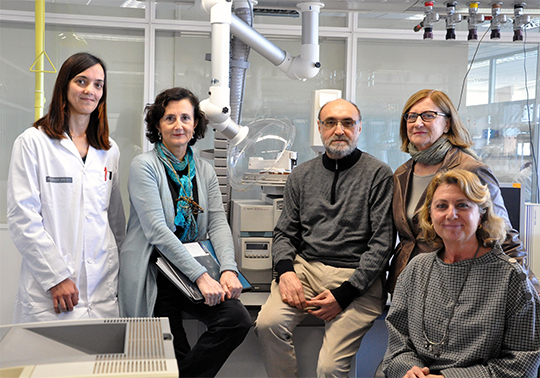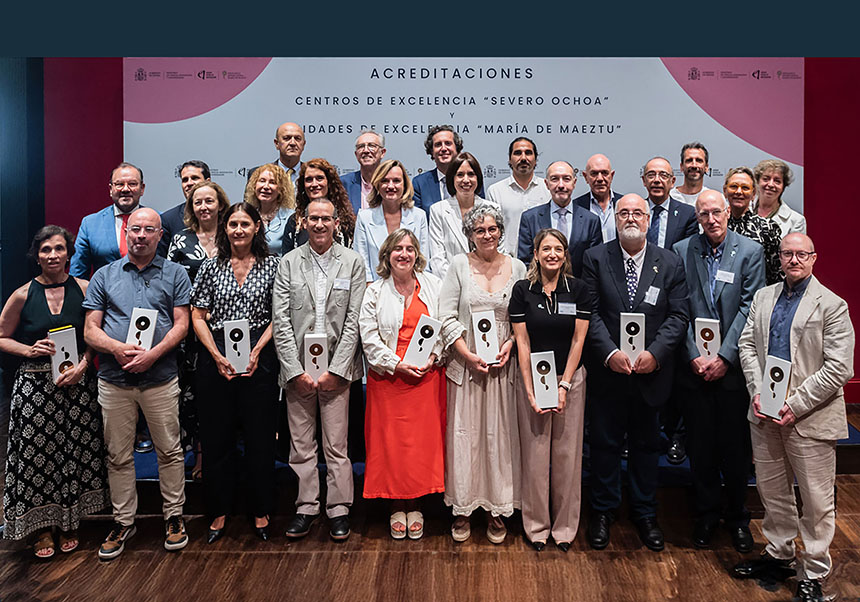Investigation of the dietary exposure to lead, cadmium, inorganic arsenic and mercury of the Valencian population
- February 13th, 2017

The 8% of adult population and 12% of children in Spain could exceed the weekly tolerable amount of methylmercury due to consumption of swordfish and tuna. And this country is above the average exposure of European countries in relation to the intake of this metal. A research, carried out by the Universitat de València, Fisabio Foundation and the Valencian Department for Health, confirms that although Valencian population is not exposed to an excess of metals, it is necessary to continue supervising the levels of lead, cadmium, inorganic arsenic and mercury in food.
The objective of this study is to assess the possible health risks derived from dietary exposure to metals. As a result, such residues in food aren’t risky for consumers. We have checked that Valencian population isn’t exposed to an excess of metals, which means that we don’t have to take this into account and continue supervising”, has claimed Guillermina Font, full university professor of the Department of Preventive Medicine and Public Health, Food Sciences, Toxicology and Forensic Medicine of the Universitat de València.
The study of total diet, carried out by the Universitat de València, the Foundation for the Promotion of Health and Biomedical Research of Valencia Region (FISABIO) and the Public Health General Office of the Regional Ministry of Universal Health Service and Public Health, has analysed the dietary exposure to heavy metals such as lead, cadmium, inorganic arsenic and mercury of the Valencian population.
The exposure has been estimated from the food consumption data and concentration of pollutants in there during 2010 and 2011 by a survey conducted to 1,476 subjects (195 children between the ages of 6 and 15, and 1,281 adults between the ages of 16 and 95).
A total of 8,100 food samples of 81 different food were analysed according to two criteria: the most consumed food in terms of quantity; and food that contributes to a greater extent to the exposure to metals of interest (swordfish and tuna in the case of methylmercury or toxic mercury).
For each food, there were 100 samples collected from local markets and food chains of 11 cities of the Region of Valencia, located in rural and urban areas.
Analysing the results for each metal, the study demonstrates that the exposure to lead for the Valencian adults is inferior (0.21-0.44 µg/Kg pc/day o micrograms per kilo of body weight each day) than the figure calculated by the European Food Safety Authority (EFSA) in Spain (0.53-0.6744µg/Kg pc/day). A microgram is the millionth part of a gram.
Nevertheless, the exposure to lead could exceed the reference values in certain groups of population. This is the case of the 2,8% of the adult population and the 28% of the child population for limits related to kidney and neurodevelopmental problems.
The report that gathers the results of the research, ‘Dietary exposure to trace elements and health risk assessment in the region of Valencia, Spain: a total diet study’, has been recently published in the Food Additives and Contaminants magazine. This report is conducted by Guillermina Font, member of the UV; and Silvia Marín, Rosario Báguena, Olga Pardo and Vicent Yusà, researchers from the Food security department of Fisabio- Public Health.
According to the estimations of EFSA, the exposure to cadmium in the Region (0.77-1.78 µg/Kg pc/week o micrograms per kilo of body weight each week) is inferior to the average figure in Spain (2.02-2.23 µg/Kg). But, the 4% of the adult population and the 8% of the minors could have exposures to cadmium by diet higher to the maximum permitted.
Inorganic arsenic
Levels of exposure to inorganic arsenic in the Valencian population were really low in comparison with other national and international studies carried out by EFSA. However, it can exist some groups of population that exceed reference values.
Regarding the methylmercury and toxic mercury, according to EFSA, Spain exceeds the average exposure in comparison with the rest of European countries (average is about 0.25 µg/Kg pc/week in adults). Within Spain, the figures are similar. In the study, Valencia is between 0.54-0.60 µg/Kg pc/week and Catalonia has 0.5 micrograms per kilo of body weight each week.
In the study conducted in the Region, it is estimated that 8% of adult population and 12% of children could exceed the weekly maximum intake of methylmercury due to consumption of swordfish and tuna. It is observed the highest values of methylmercury in the swordfish. The majority of the analysed samples exceeded the established limit prescribed by law for the total mercury.
Reducing the exposure
“Some types of measures are required to reduce the exposure of the population. On the one hand, the Administration should continue carrying out controls to remove from the market the food that exceeds the maximum limits of metals. On the other hand, it is necessary to supervise possible emission points, and continue reinforcing environmental controls because the food contamination is originated in its presence in the air and land. In the case of mercury, consumption of big fishes such as tuna or swordfish should be moderate”, emphasises Vicent Yusà, general assistant director of the Public Health and Food Safety of Public Health General Office.
Overall, from the research one can conclude that the exposure of the minors to metals is approximately the double of the exposure of adults. Cereals are the main source of exposure to lead, cadmium and inorganic arsenic of the general population and it’s mainly because of its high consumption.
Report:
Silvia Marín, Olga Pardo, Rosario Báguena, Guillermina Font, and Vicent Yusà: Dietary exposure to trace elements and health risk assessment in the region of Valencia, Spain: a total diet study, Food Additives & Contaminants: Part A Vol. 34, Iss. 2, 2017
DOI: http://dx.doi.org/10.1080/19440049.2016.1268273
File in: Investigació a la UV , Química , Difusió i comunicació científica , Producció científica , Grups d'Investigació , Ciències de la Salut
















